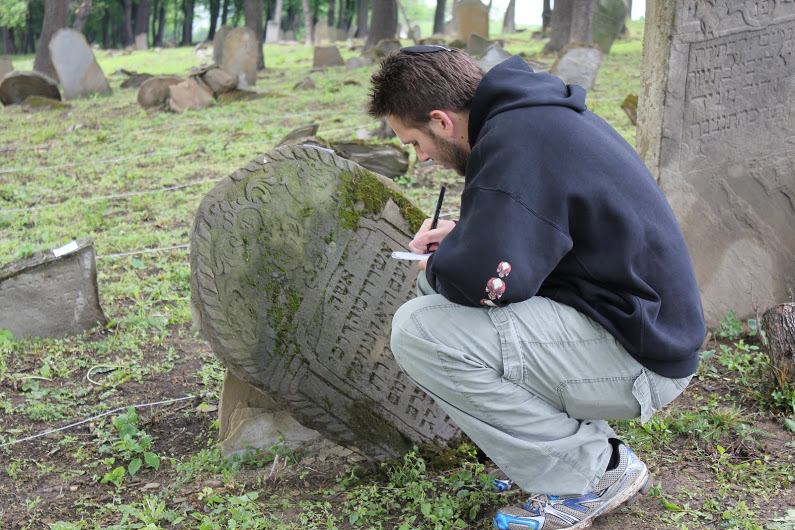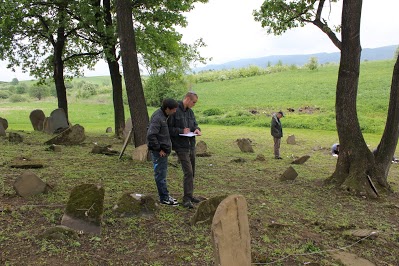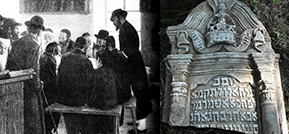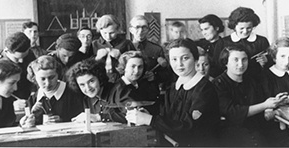ACE High School (Israel) expedition
Nowy Żmigród
spring 2012
 |
 |
 |
 |
As part of its ongoing projects, Jewish Galicia and Bukovina Association sent a group of students from ACE High School in Israel (www.aceisrael.com) on a heritage trip to Western Galicia, Poland. The trip was coordinated and run by Nesivos Yeshiva Tours. A total of eight students and two staff spent just over a week in Poland, three days of which were dedicated entirely to the cemetery renovation and documentation in the village of Nowy Zmigrod.
Nowy Żmigród, until 1946 called Żmigród, is a village in Jasło County and sits at the south-eastern corner of Poland.
The population of Żmigród over the last few centuries has fluctuated from 1,500 to 3,000 people. At times Jews constituted 60% of Zmigord’s inhabitants. The first information about Jews in Żmigród dates to 1410 when Jews were permitted to settle throughout the city. A large two-storey synagogue was built there in the 16th century.
The Jewish community of Żmigród had under its jurisdiction other Jewish Kehillas including Jasło and Gorlice. The latter communities had to bring their dead for burial in the Żmigród cemetery. In 1765 the total Jewish population of the city and the neighboring areas consisted of 1,926 people. A great exodus took place during World War I, when many of the Jews of Żmigród left for overseas .Most Jews in Żmigród were Hasidic, largely following the Sanzer Rebbe. After Żmigród lost its city status in 1919, the Jewish population dropped to 800 people by 1939.
Early in 1942, a ghetto was established in Nowy Żmigród. More Jews were forced to move into the community from nearby villages. The Jewish population reached 2,000 people with an unbelievable level of overcrowding.
On July 7, 1942, all the Jews were ordered to assemble in the square whereupon they were surrounded by the German and auxiliary police units. Women, children, sick and elderly people were separated from the able-bodied. After hours of waiting, 1,250 Jews were led to the forest of Halbow where they were killed into prepared execution pits. Some of the survivors of the round-up were sent on August 15, 1942 to the Zaslaw labor camp near Kraków. Another group of survivors were sent to the Płaszów death camp. The last remnants of the Jewish population were then sent to the Belzec death camp at the end of the summer in 1942.
The ACE High School group was warmly greeted in Nowy Zmigrod by Rabbi Natan Dudek Levin from the Rabbinic Commission for Cemeteries in Poland and by administration and senior class of the local high school who showed a presentation that they had created about the history of Jews in Nowy Zmigrod. In addition, the Director of Culture for the region spoke to the group and accompanied it for much of its work. A local internet TV videographer as well as a news-crew filmed the group's work and interviewed its members.
Despite inclement weather, the team documented over three hundred graves stones, mapped out the cemetery, and did general maintenance and cleaning of the cemetery. All of the students found this project to be invigorating education and emotionally and are looking forward to being part of such ventures again in the future.
Read More about the expidition here






